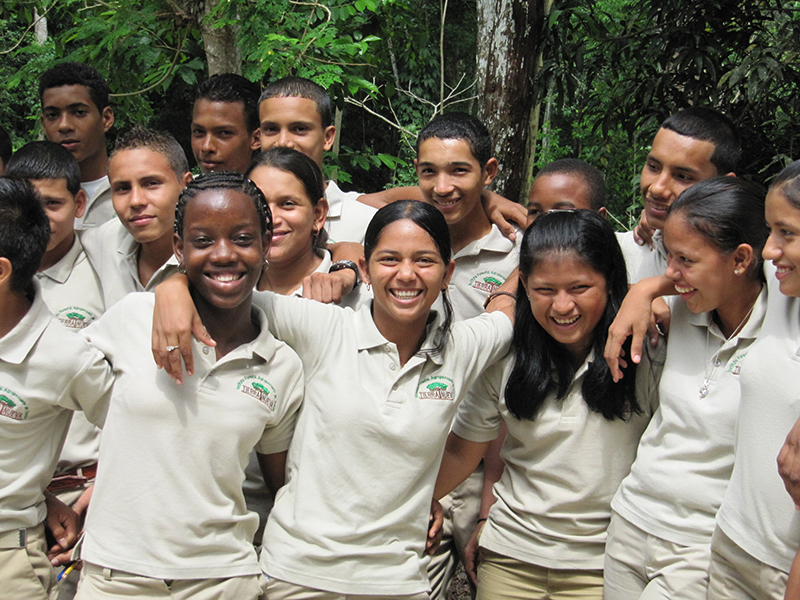
Segundo, a young Embera Indian and indigenous environmental leader, guided my kids on a hot sticky trek through the Darien jungle explaining the incredibly rich biodiversity of this economically poor region of Panama. He leads these eco-treks as a volunteer through a local NGO, and with very limited job opportunities for Embera here, I was curious how Segundo made his living.
Segundo told me that he had not gotten much of a formal education: school was too far away from his indigenous village, not to mention that it had 50 students to a class and poor teaching. Cependant, he proudly talked about how he now fixes air conditioners in this hottest corner of Latin America. When I asked how he got this training, Il a flashé son sourire et a dit que son professeur était, "YouTube bien sûr,» (YouTube bien sûr).»
Segundo représente un côté différent de ce qui est devenu un international débat Sur des cours en ligne massifs ouverts (MOOC) et en e-learning, dans lequel un nombre croissant d'op-EDS, Blogs et sessions de débat de conférence Question sur l'efficacité de l'e-learning, retour sur investissement, durabilité, Taux d'achèvement et qualité.
Ce sont des conversations valables pour une industrie en pleine croissance qui devrait avoir $52 milliards par an en investissements par 2016. Mais la réalité est que bon nombre des 357 millions de jeunes et de travail sans travail Le monde ne se soucie pas si les spécialistes des sciences sociales pensent que le message électronique est un moyen approprié pour eux d'acquérir des compétences et des connaissances.
Plutôt, à travers l'Amérique latine, Afrique et autres régions, young adults like him are flocking not only to YouTube educational videos, but to e-learning aggregator sites such as www.Alison.com, www.CreativeU.com and Coursera to get free access to just-in-time learning—even if it only gains them a certificate of competency completion and not a formal accreditation.
People like Segundo don’t always have time to wait for the results of international debate. And their need and desire to access educational content is not changed by the statistic that less than 10 percent of students in the U.S. finish MOOCs—a fact commonly used to temper the optimism of e-learning’s potential.
Au récent Online Educa global e-learning conference, delegates from African countries also highlighted that the narrow Western definition of MOOCs as being only online multi-week courses offered by universities overlooks the technological limitations in some countries caused by limited bandwidth or Internet connectivity.
Plutôt, blended learning MOOC approaches from India to Nigeria to Central America have historically more often used Massive Open “On-Air” Courses through radio distance learning, and increasingly access to learning via their Android devices to deliver agricultural or literacy training.
The bottom line as highlighted at the Online Educa conference was the importance of more localized content in local languages. It is pretty intuitive, Les apprenants veulent que les connaissances contextualisent dans leurs situations et dans leur langue plutôt qu'un simple exemple standard conçu pour un apprenant générique.
Les collègues ont également souligné que ce qui comptait le plus à de nombreux utilisateurs dans les pays en développement, c'était d'obtenir des certificats pour aider à les possibilités d'emploi ou simplement à obtenir les informations dont ils ont le plus besoin lorsqu'ils en ont besoin, être un cours pour avancer ou s'améliorer en tant qu'enseignant ou un fixateur de climatiseurs dans le Darien.
Pour l'instant, La création continuera de soutenir le tendances et les méthodologies appropriées et l'efficacité d'apprentissage des plateformes et cours d'apprentissage en ligne ou mixtes, tout en renforçant la capacité de nos partenaires à accéder à ce dont ils ont besoin, Quand ils en ont besoin.